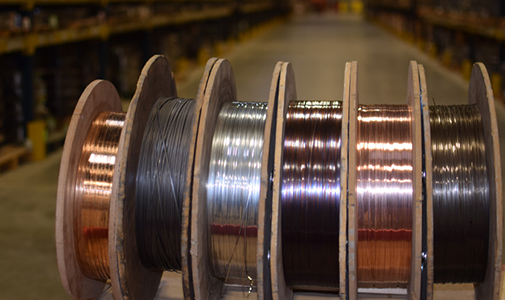Material Selection Guide
Choosing the Right Material
After finding the right retaining ring or wave spring for your application you would think you had made all the hard decisions.
Wrong! Now you need to choose the right material for your application!
Specifying the correct material for your application can prevent additional cost and failure in your operation down the road. Luckily, Smalley is here to help! Identifying the best suited standard or exotic alloys early in the design process can ensure that you have the right fit for your environment and budget.
The number of materials offered by Smalley can be slightly intimidating so we developed a quick guide to help you through the process. Having some general knowledge of what is commonly available for use in Smalley flat wire products should also alleviate some questions during the ordering process.
Carbon steel is the most commonly specified material. Stainless steels, although more costly than carbon steel, provide far superior corrosion resistance and have higher temperature operating limits. The five main factors to keep in mind are the following: 
- Cycle Life
- Environment
- Lead Time
- Special Applications
- Budget
All of these factors should be determined prior to choosing a material to ensure target application performance, stability and strength.
Smalley has invested heavily in our flat wire rolling mill operation. In addition, we offer a vertical integration process that has evolved into the production of hundreds of material cross-sections in a wide variety of alloys.
Edgewinding, also known as “The No-Tooling Cost Process,” is our precision forming operation that coils pre-tempered flat wire on edge to create a near perfect circle, similar to the famous Slinky® coiled metal toy. Circular-Grain metallurgy gives our products key benefits including:
- Strength and stability that is far superior to conventional retaining rings and washers that are simply stamped through the metal grain
- The ability to coil to your exact specification in any diameter and with any number of turns (layers or coils), effectively eliminating material waste
- The flexibility to accommodate your design changes without the need for additional tooling and die modifications
Click here to download the Material Selection Guide from Smalley.


Connect With Us